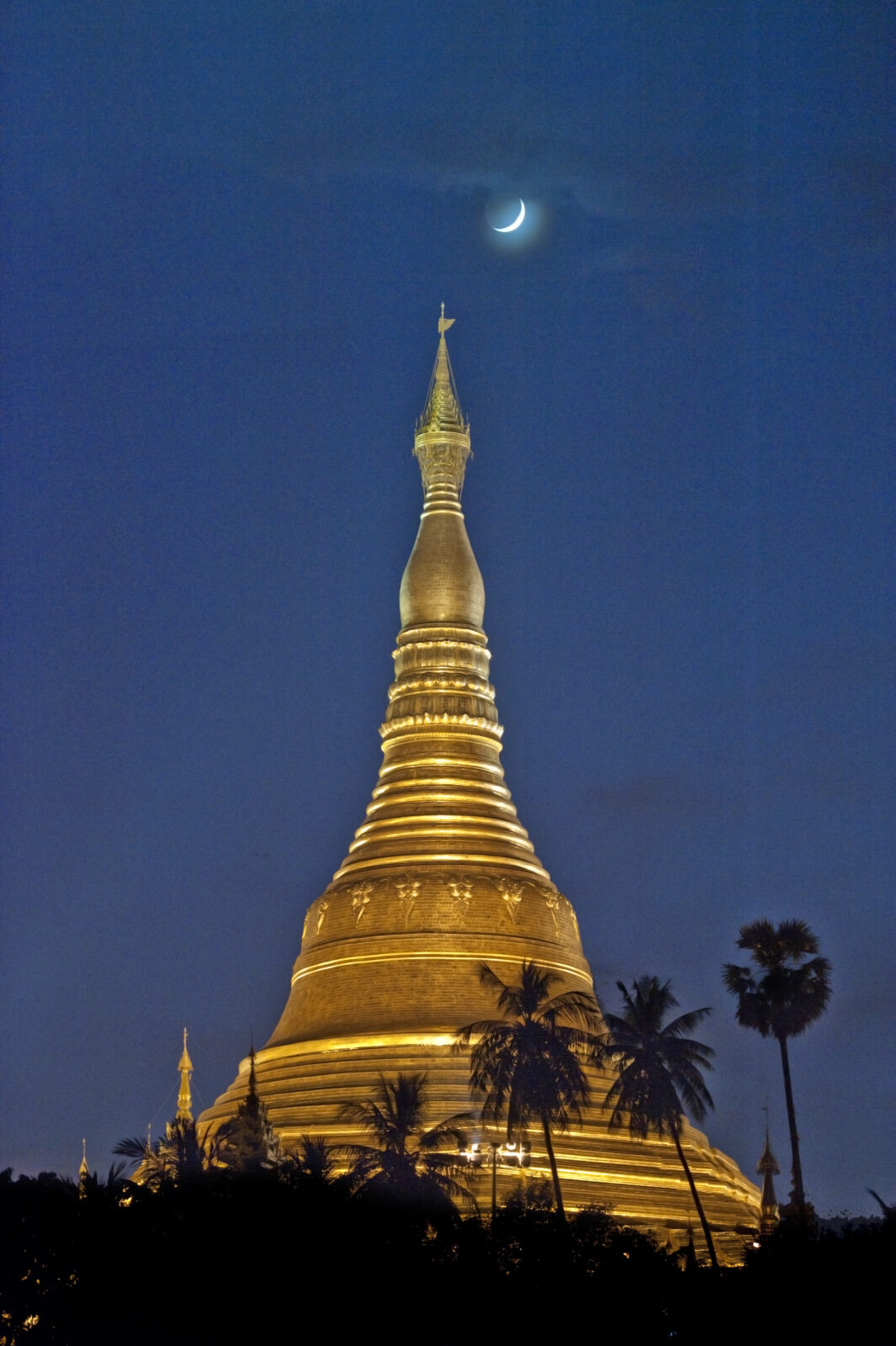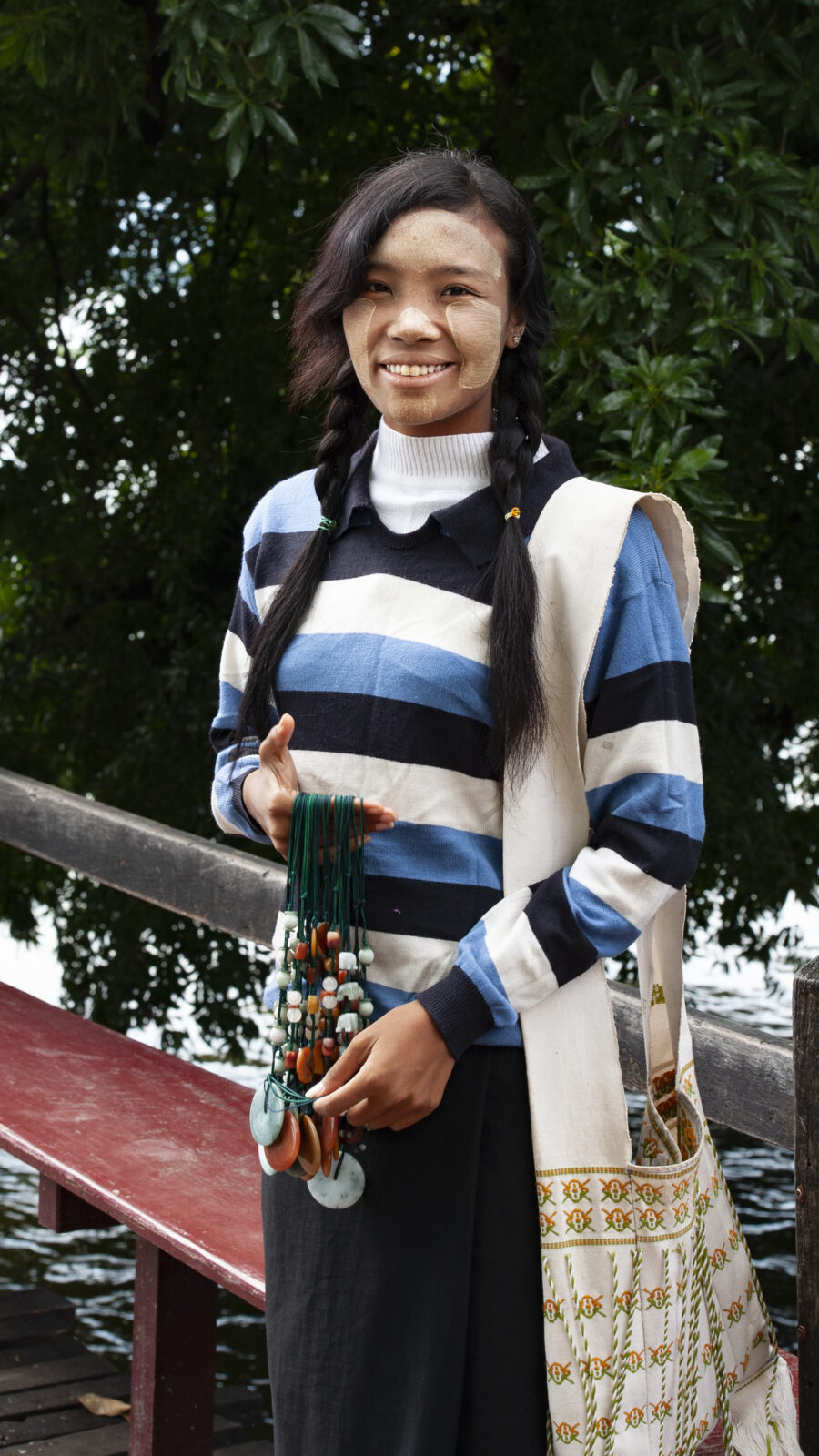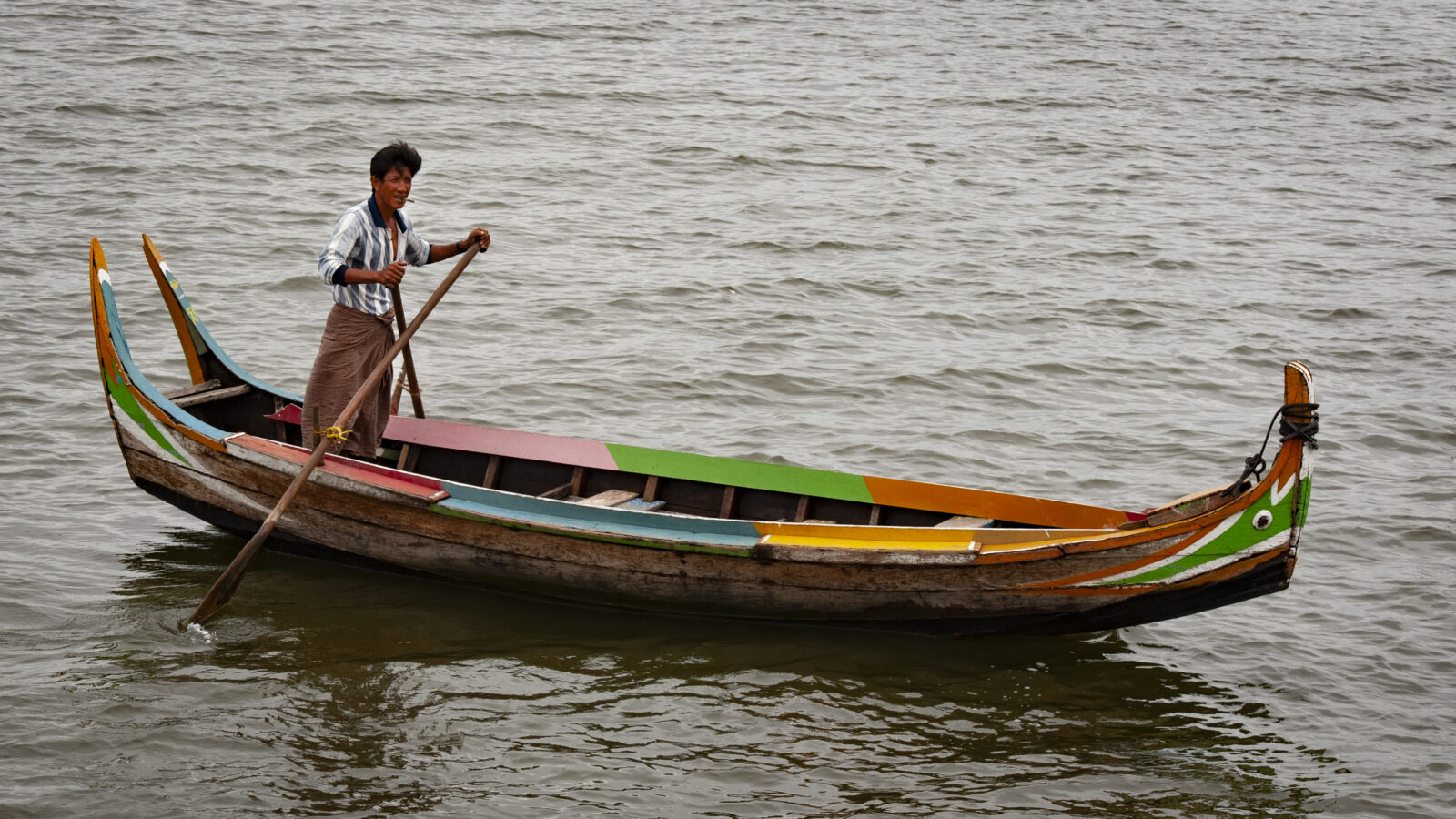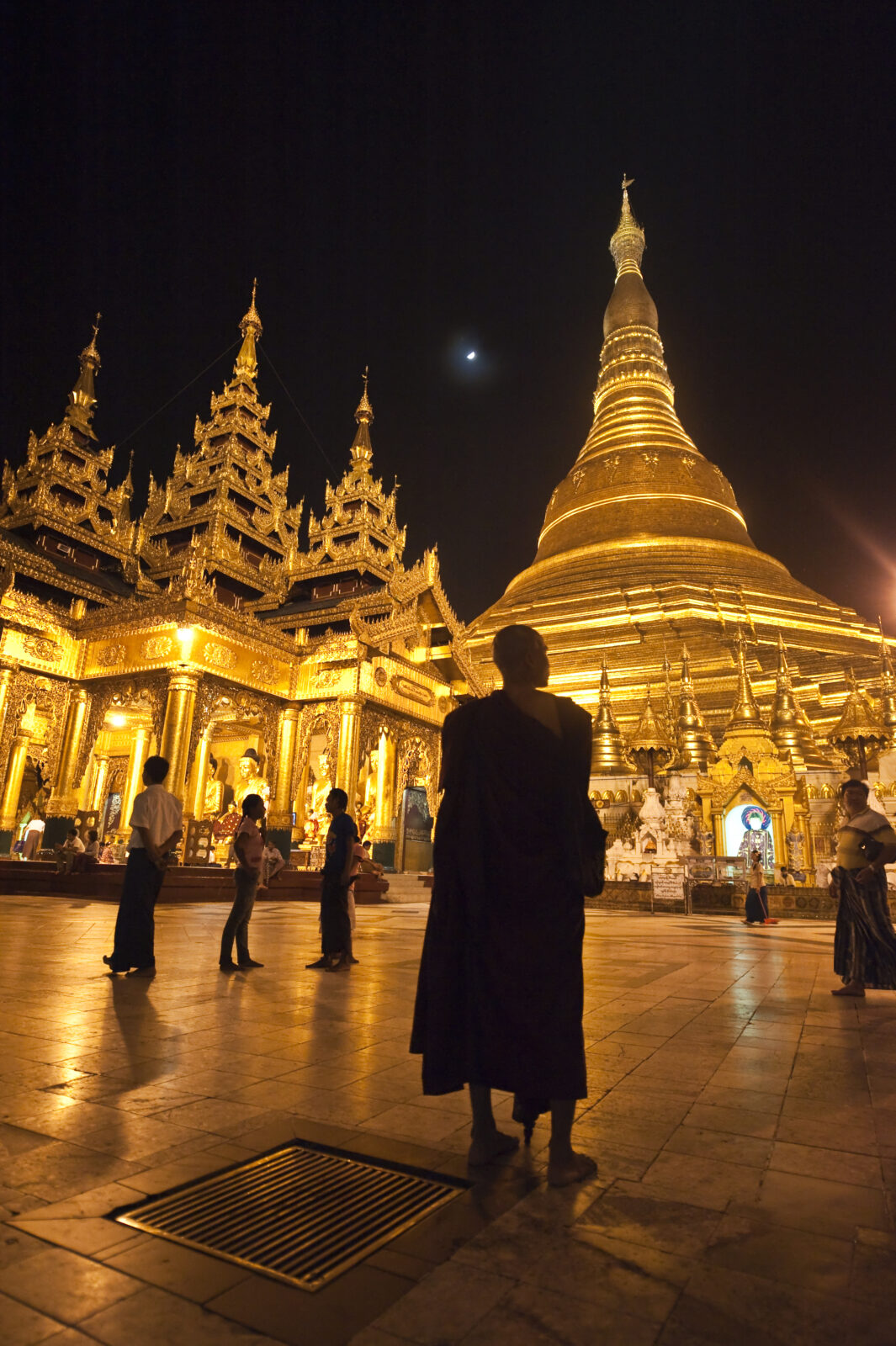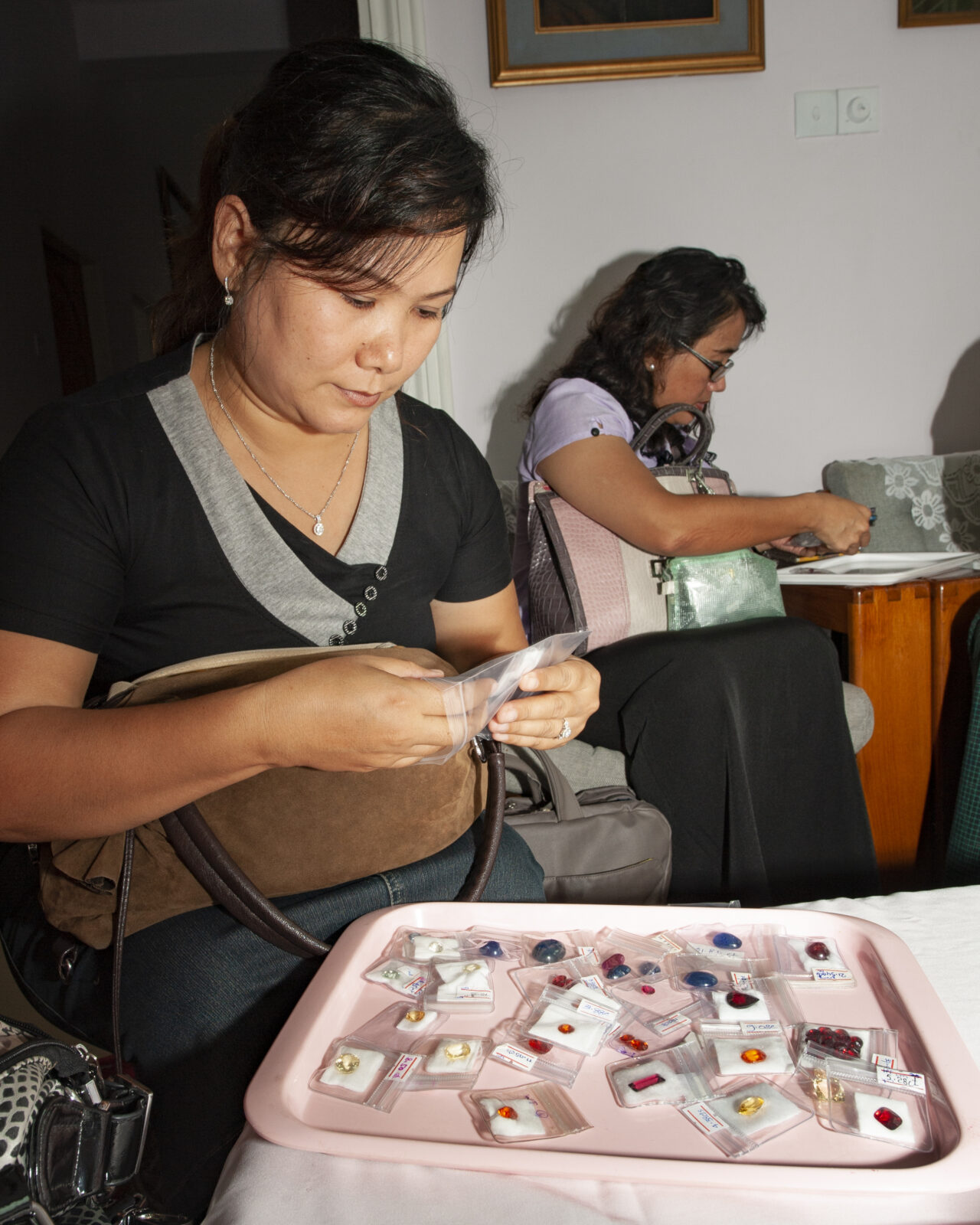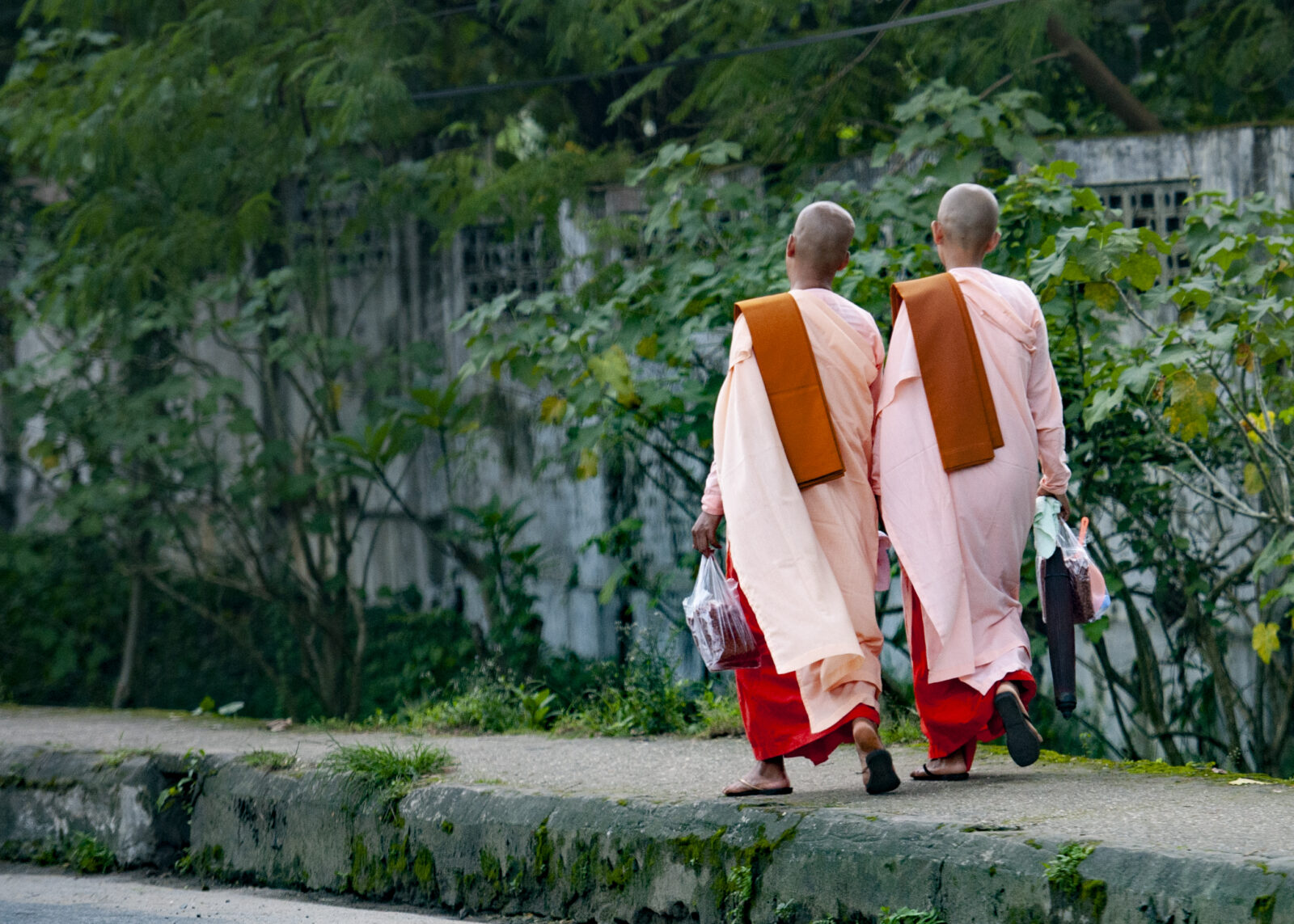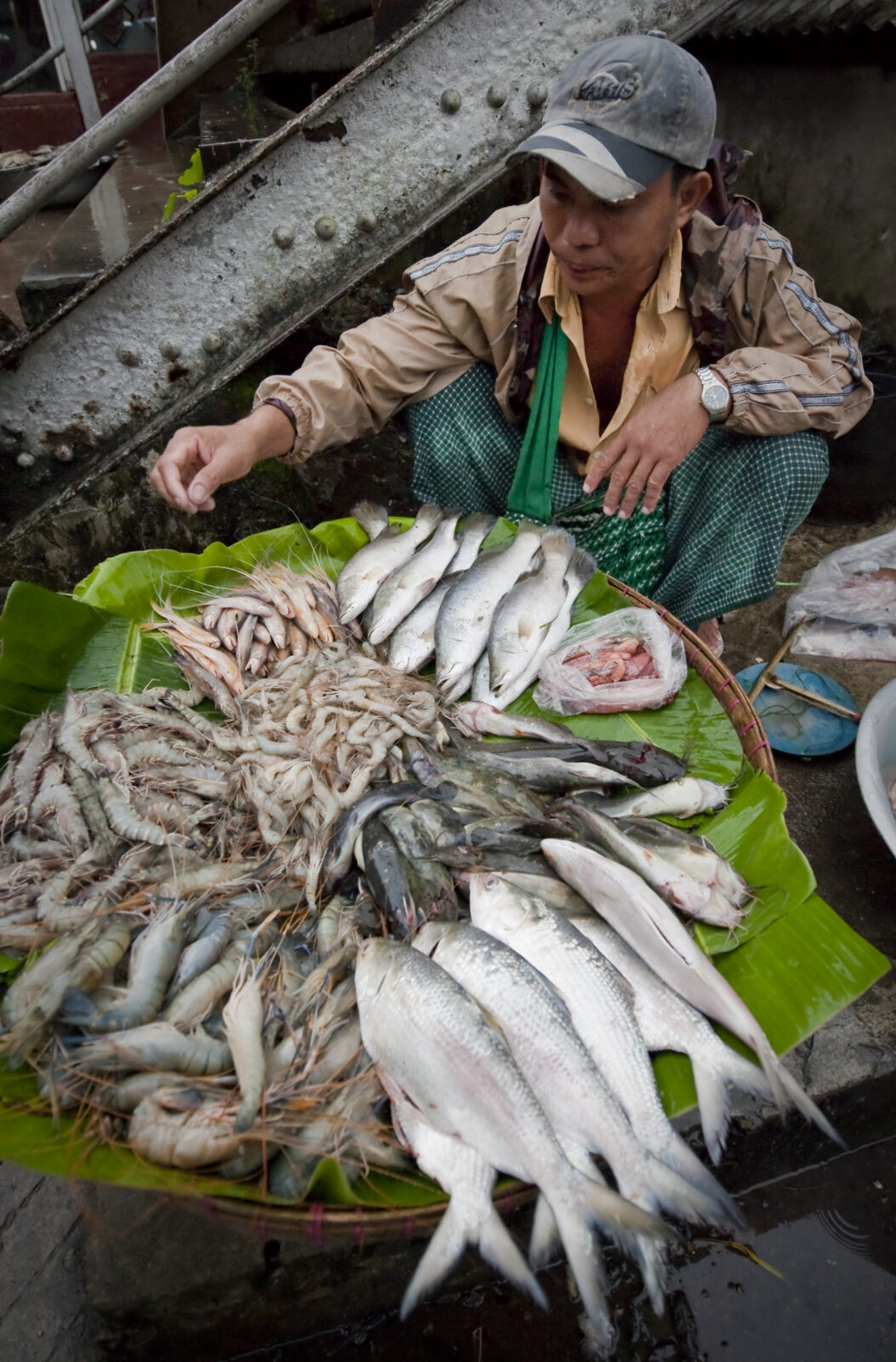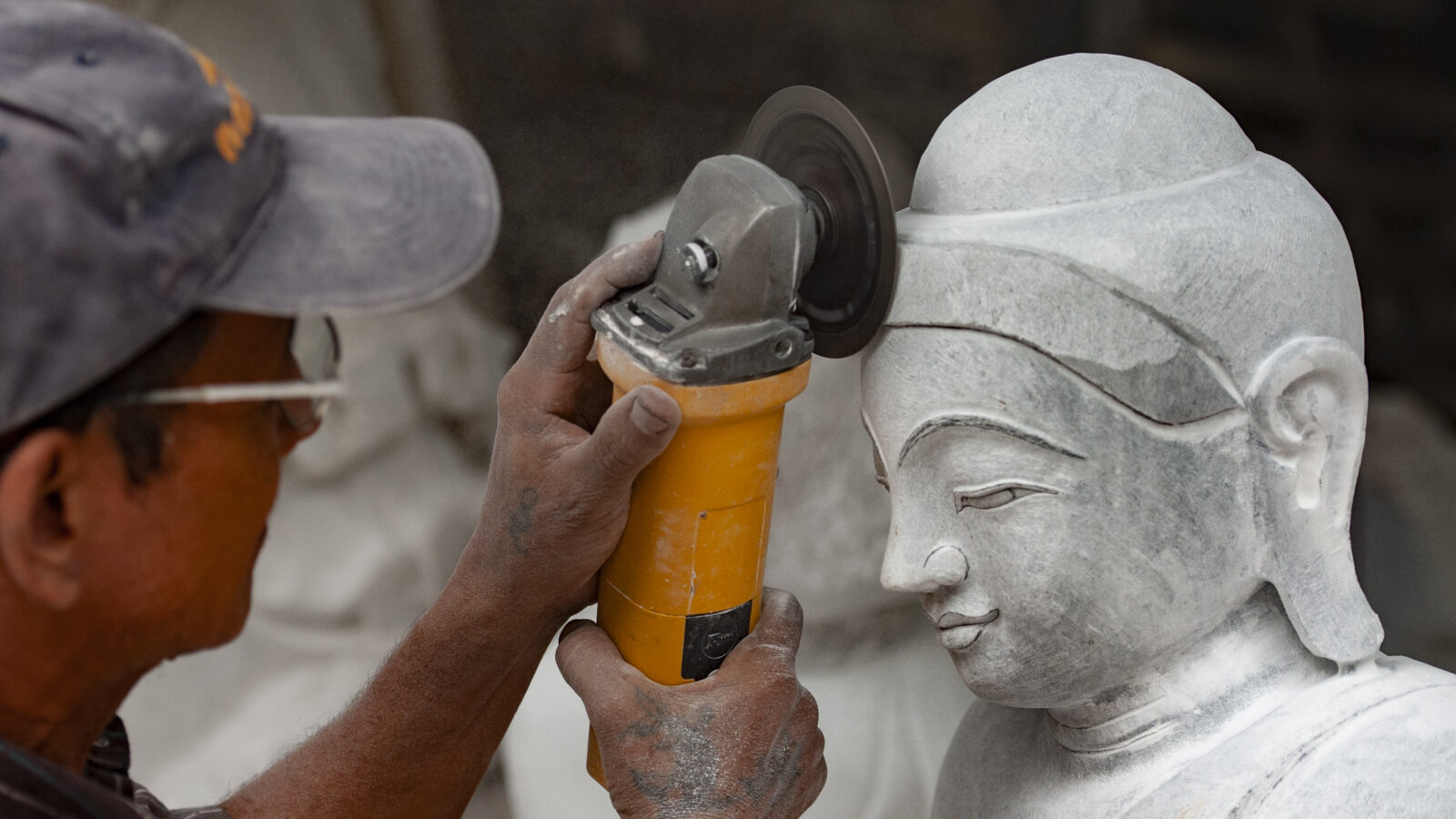Burma and Spinels in my Collection
By William (Bill) Larson, February 2021
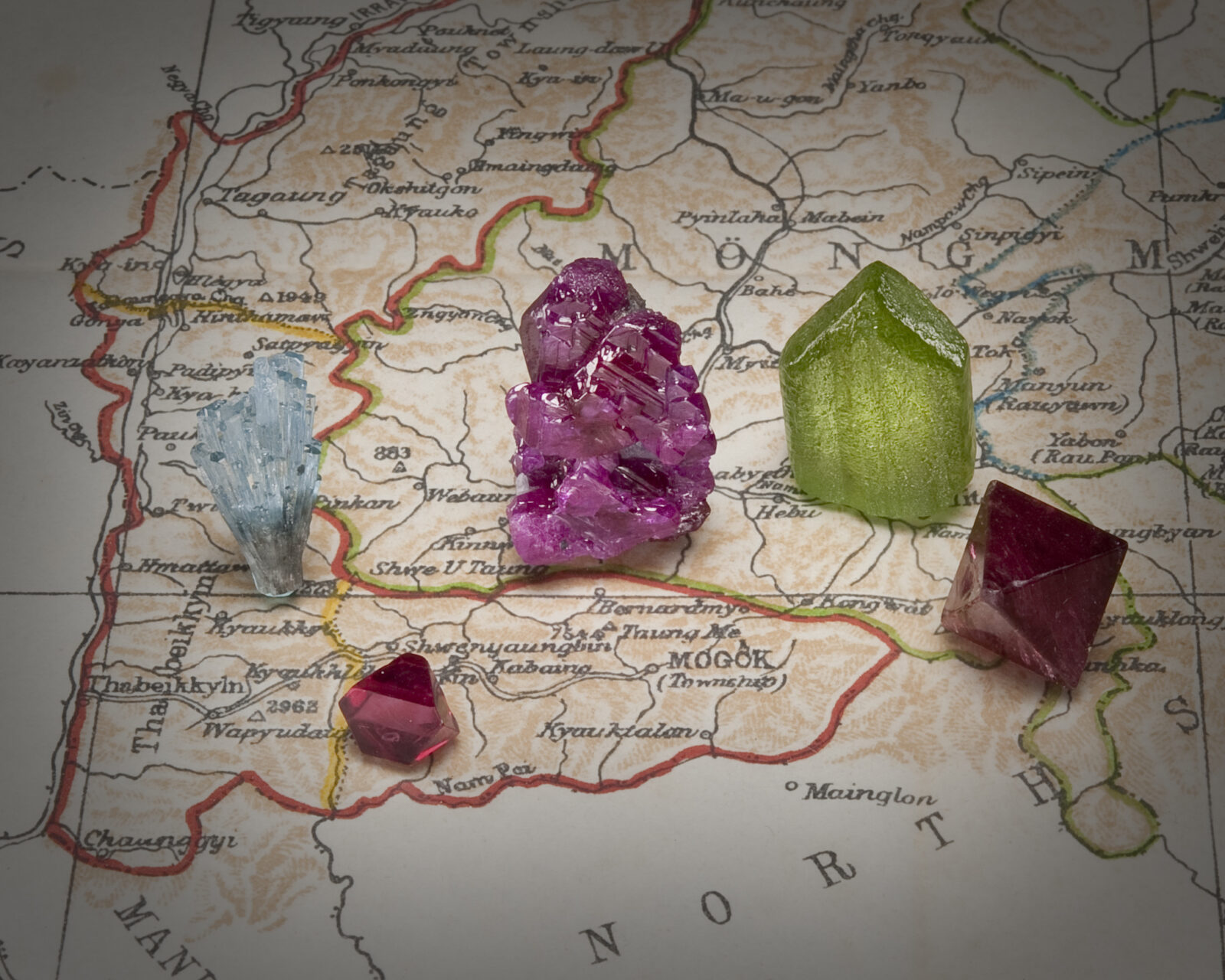
William F. Larson collection (L-R: 137, 248, 256, 253, 254); Mark Mauthner photo.
As both a dealer and as a collector of gem crystals and mineral species prized by both the gem and mineral markets, I have collected Burmese Gem minerals in particular now for nearly 30 years. I’ve traveled to Burma nearly 40 times, including a number of rare trips to the mines directly (very few foreigners were ever allowed in, and only with military escorts and government guides). Fine red or pink spinel crystals, outside of those few in museum collections, were simply nonexistent in the open mineral show markets up until the 1990s; both here in the USA and Europe. Only some rare pieces of blue gray-spinels from Madagascar and a rare few of our own US blue spinel were available. So, spinels were highly sought after on my travels, and actually make up more of my gem Burma collection than the rubies and sapphires you would have expected.
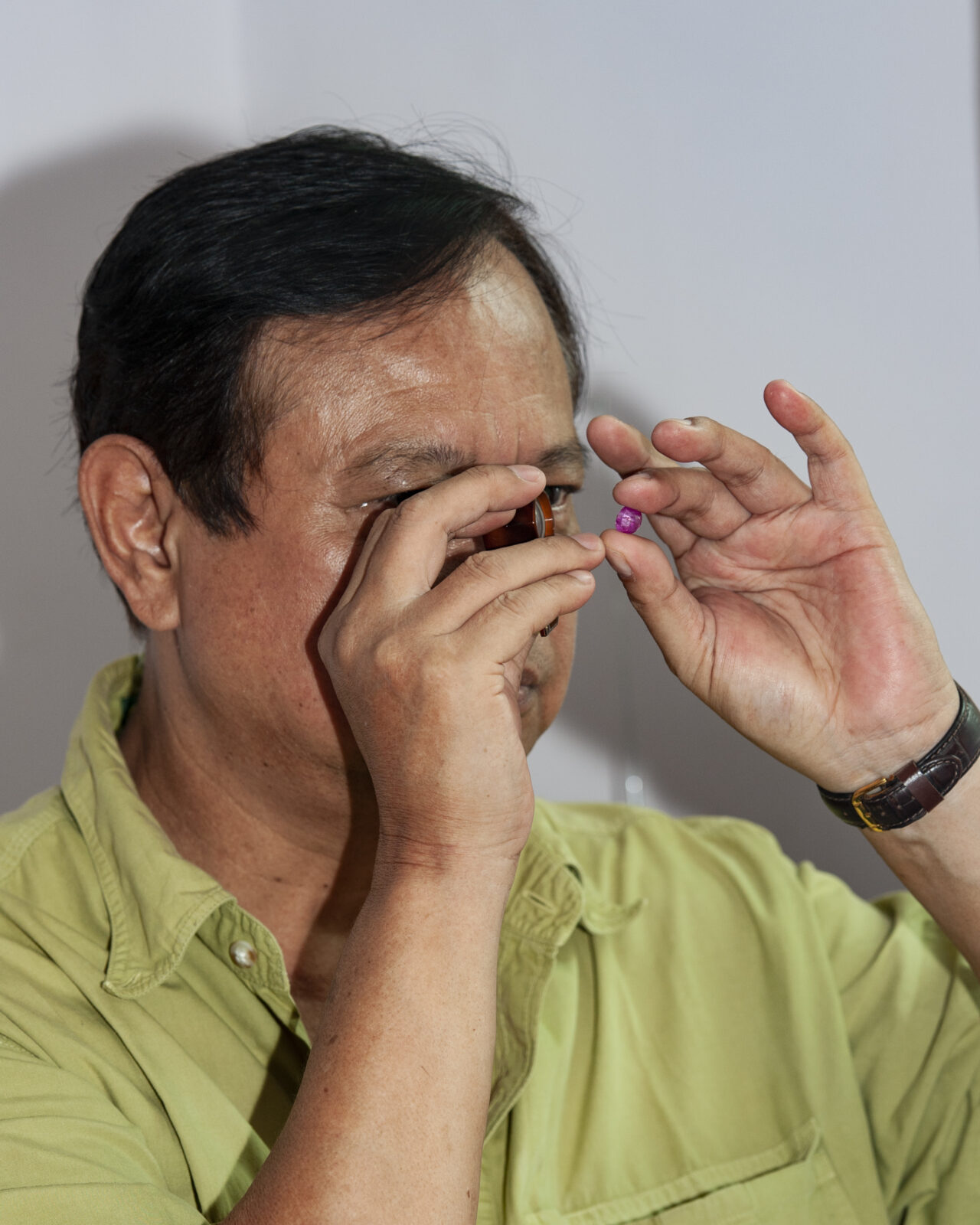
Mark Mauthner photo.
Any collector of rare gem crystals wants beautiful red spinel octahedrons in their collection. Mogok, Burma (now Myanmar) is the world’s finest locality! When Dr. Gubelin invited me to be part of the first European group to visit Mogok in 1993, I jumped at the chance. 10 of us were invited and “accompanied” by the military, including fixed machine guns on a convoy, into Mogok, essentially the Wild West of the region at the time. It was a 120 kilometer trip lasting 8 hours in what we called the pain mobile, a Jeep knockoff that you hit your head on the ceiling constantly. We stayed in almost freezing conditions in the center of the town, of perhaps 60,000 people at that time. It was obvious that they all made a living off of gemstones. We got to meet many miners including one I became good friends with, Dr. Saw Nang U. Most of the material they were mining was alluvial, so crystals were rare. Because there was no market for crystals locally, they cut everything! I helped develop this market by teaching them and paying for raw crystals, instead of gemstones.
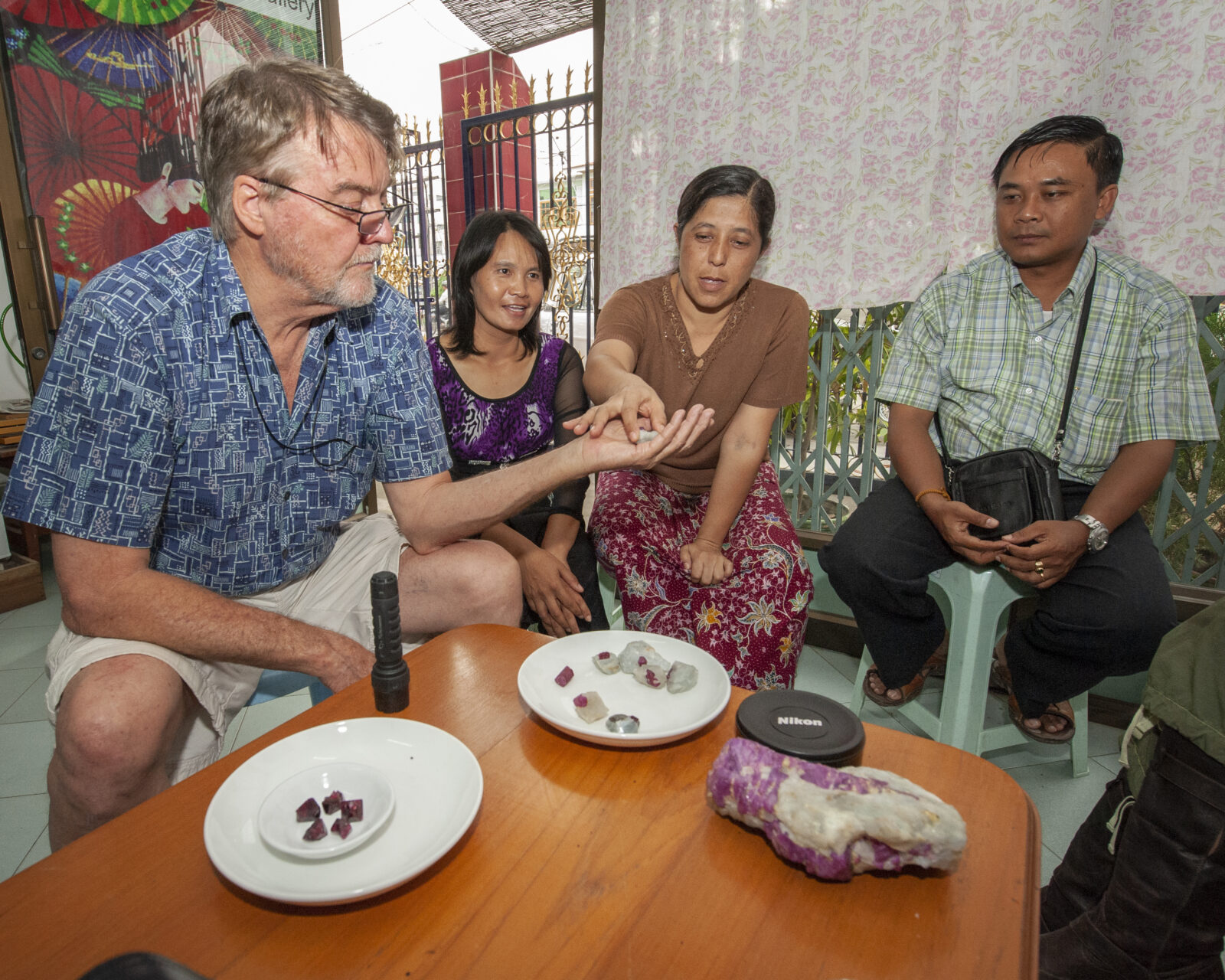
Mark Mauthner photo.
On my first trip I was unable to get any crystals at all, although we were shown a beautiful ruby crystal cluster but with no chance to purchase it. We were able to buy a fantastic 25-carat ruby-colored spinel from the local Yangon annual gem auction, but there was literally not a spinel crystal to be seen. However, I was excited by seeing the ruby in Mogok and started coming into Burma 3 to 4 times per year at my peak travels, as I was always going to Bangkok for gems and that’s only a one hour flight into Yangon if you can get the visa and access to do anything once you are there. However, it became abundantly apparent that the local miners and dealers in Mogok did indeed cut everything even if it was a great crystal, and only produced tiny cut or included gems. I was persistent! I kept asking for natural crystals. None of the major ruby or sapphire dealers were interested in crystals or in the slow money to deal with them and deal with waiting for me to come and see them compared to cutters who pay immediately; so I was dealing with small miners and many geology students anxious to learn, which was actually great in the long run. I taught them by bringing, over the span of 10 years starting in the 1990s, almost 500 books (heavy luggage!) on crystals including the USA gem and mineral magazines. A few caught onto the crystal idea and I started seeing nice topaz crystals. But spinel wasn’t to be seen.
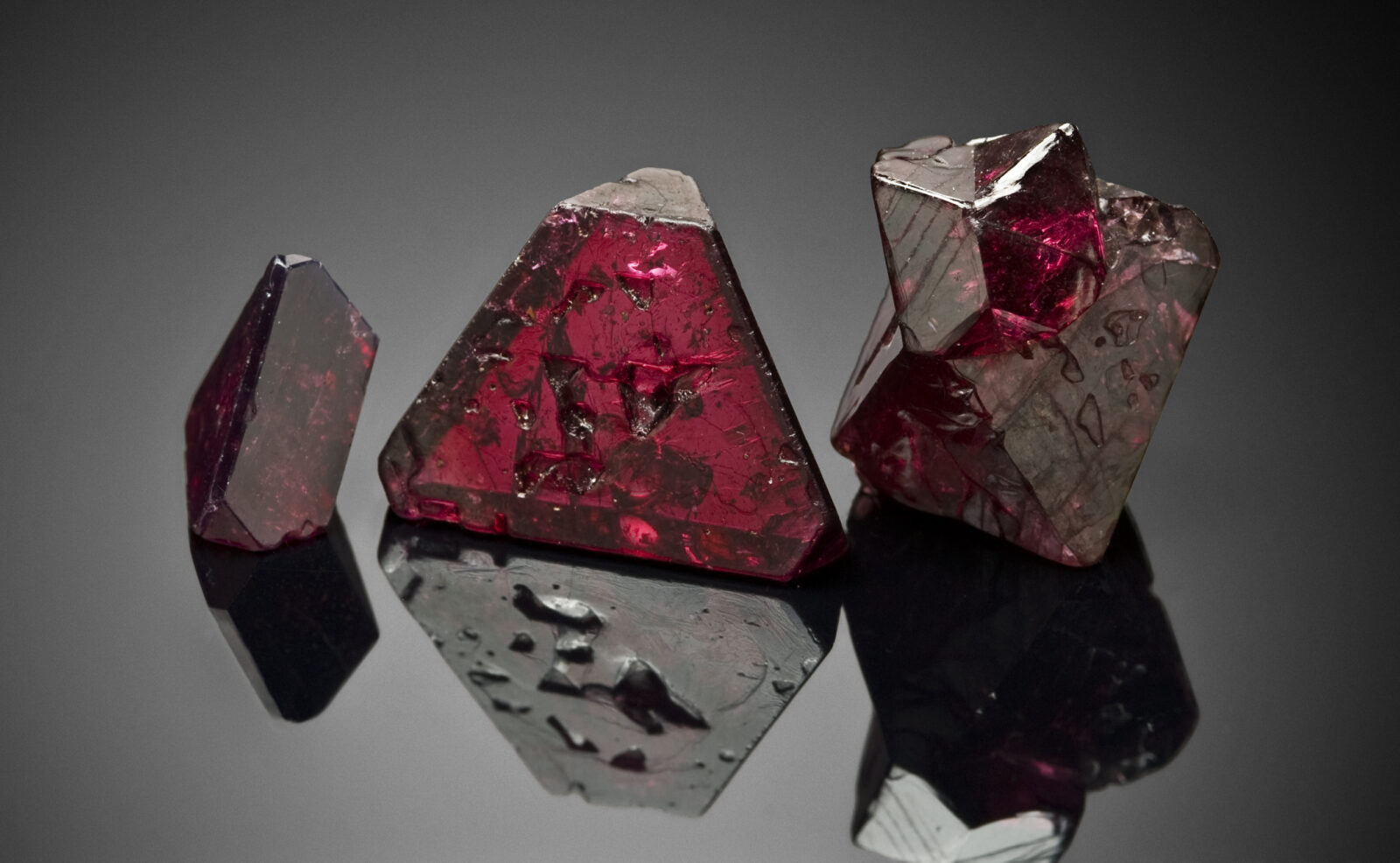
Often, I was not allowed into Mogok for all kinds of reasons of luck or timing, only Yangon and sometimes into Mandalay where dealers would bring rare cut gems. But on my third trip into Mogok, I met a dealer, U Kyaw Thaung, who later started a company in Yangon called the King of Crystals. He had a small cluster of maybe 4 intergrown octahedrons (1-2cm each opaque pinkish-brown but sharp) and it was for me at that time the holy grail! Of course, the moment I really wanted it he pulled it back and told me it was not for sale and he would not sell it. I was crestfallen but tried not to show it however the word soon got around that I would buy crystals (that crazy foreigner!) and I would later get permission to go to Mogok. There are three markets there with a fascinating split of goods: the ladies market in the early morning; a man’s market in the late morning; and the third market in Kyatpian (a small city close to Mogok). In each market, I was shown hundreds of parcels mostly cut gems including synthetics – one has to know a lot because even in the 90s there were fakes and forgeries, and treated goods in the gem market right at the source. Soon, small parcels of tiny to 1/4 inch crystals were shown and as I bought more and more, it became a trend that many beautiful crystals were preserved. In the late 1990’s I was perhaps the only foreigner to visit Mogok actually looking for crystals (more for my own interest and collection, than for resale as a mineral dealer at the time because it really was not cost-effective to buy for resale when you factor in the time and trip costs). Others soon followed but for several years I was able to obtain many amazing things, and most of this collection was assembled on frequent trips between the late 1990s and 2008 before I heavily ramped down my trips there, and restrictions were placed on Burmese imports. Under Ne Win, private dealing was not allowed (Ne Win was Burma’s military dictator during the Socialist Burma period of 1962 to 1988) and some things were saved by people. Some started coming out from under beds, once word of my acquisitions spread, and I even obtained many of the pieces in this collection, many of the loose spinels, from old stashes wrapped in newspapers from the 1970s. The spinels shown here from my collection, are almost impossible to obtain today as mining is very curtailed, very industrial for gem rough when it does happen, and in any case, finer crystals were never common. Most of these spinels were therefore found between the 1970s-early 2000s and are not contemporary (I had not added much to the collection since 2008).
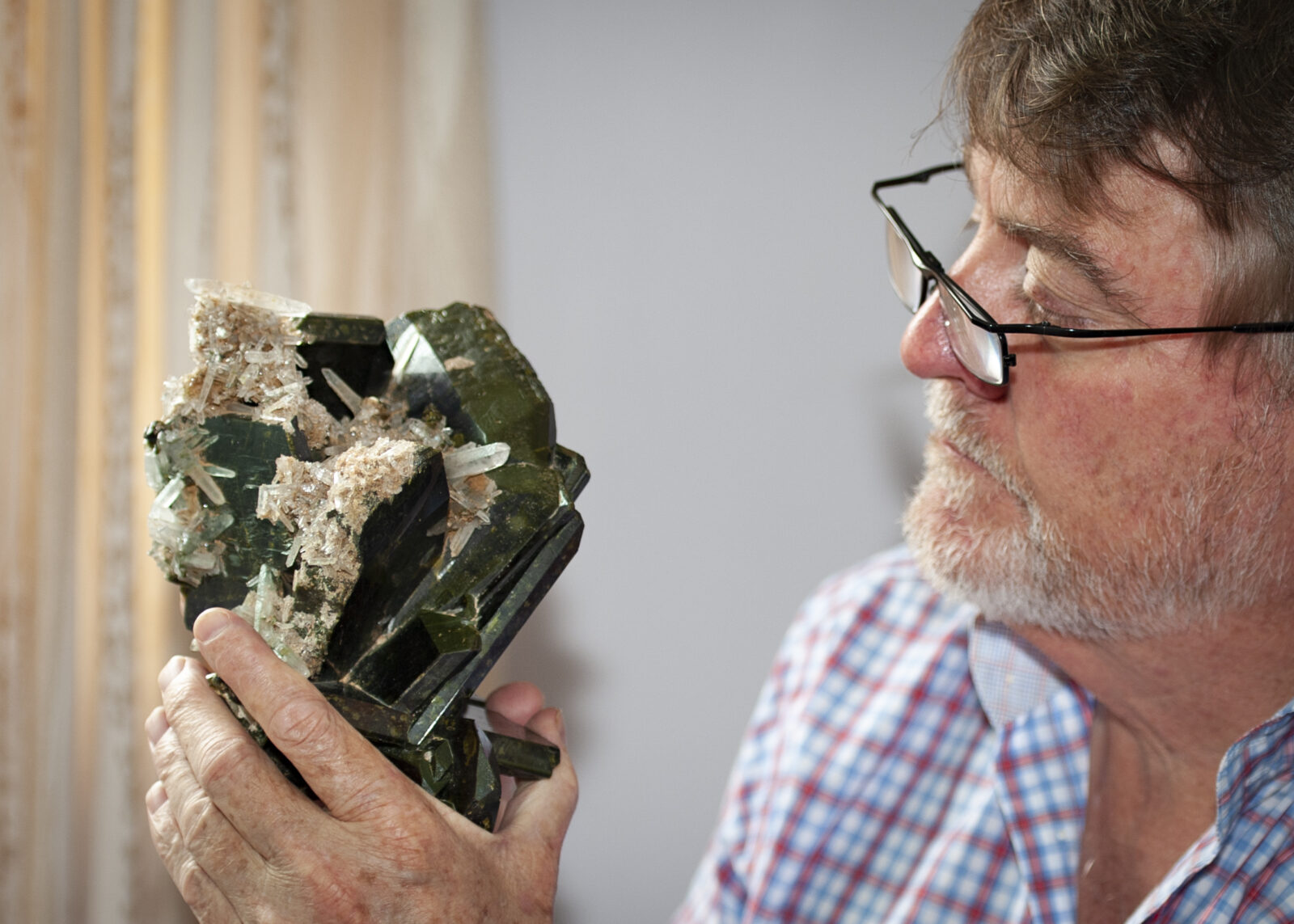
Mark Mauthner photo.
Of course with the internet, the miners soon caught on and by the early 2000s, prices begin to soar to heights I could not purchase anything at, hardly. If they saw a specimen of topaz on the Arkenstone’s website at $2000 (that I might have sold him!), they wanted $2500 for the same or worse level material on my next trip, and they did not understand about damage and dings so everything was highly-priced with little chance to buy more. So, the easier times were gone by 2008 or so.
I had had to forgo rubies during the sanctions at the time from 2008 until recently, but spinel and other minerals were still allowed. They just were not commonly available. In 2016 the sanctions were lifted so rubies again were allowed but it seems that not many good crystals are being recovered and without people like me on the ground there to pay cash for them, they mostly go to the cutters for quick and easy money. There is little incentive in the region to preserve crystals, without a ready and available local buyer. I have gone on 37 trips into Burma and have many friends there still. The best travel and times for me were during the past ten years, even though not many specimens came as a result (some phenakites, some odds and ends new finds, the painite discovery). I’ve been referred to as The Godfather of Crystals for Mogok stone dealers, and they treated me with much respect in the good times. Thinking about what was destroyed to cut inferior gemstones is beyond sad, but I am happy my collection preserved what I could of what was found in what are surely the glory years of minerals there. Now the miners know much more, and of course, they look at the internet often, so hopefully new finds will start to trickle out again, and more will be preserved outside of the Mogok area itself, where there are surely many other crystal deposits waiting to be found.
